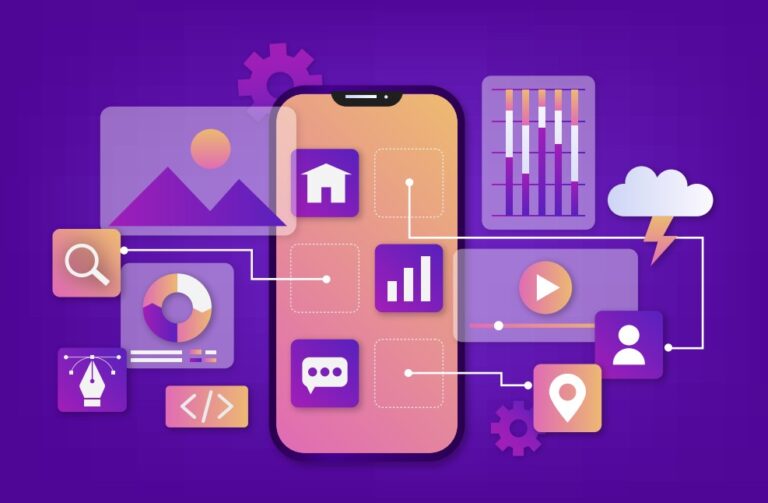User experience is the root that sets the success and popularity of Mobile Application Development. Today, when almost every second company turns to mobile app development, it is essential to get your development high-performing by prioritizing user experience.
According to reports, the mobile app development market is expected to generate $1380 billion by 2033. To make the most of the impressive figures and drive these numbers to your rescue, it is essential to develop mobile-friendly applications.
Easy navigation, simple design, the right combination of colors, and fast-loading applications enhance user experience for mobile applications.
Keep reading to unfold the secure to optimizing mobile app performance for efficient end-user experience.
Why do we need to improve mobile app performance?
A well-tuned Mobile app behaves according to user back and forths – switches happen without delay, and interactions are silky smooth. When users experience no, or just very minor, delays or bugs, they are more likely to trust the competitor app with a positive impression. Hence, more likely, they will be satisfied and most loyal. Here are the top reasons why you should work on improving mobile app performance:
Measure the user engagement
User engagement is a significant indicator of an app’s success, and how performance impacts user engagement is one of the major aspects. With a frictionless app that seems to ‘get‘ a user’s actions on time, the user feels motivated to find out more and spend more time in the app. Performance enhancement generates higher engagement measurements, whose metrics include frequent app usage and session periods, which are longer.
Moreover, the entailed consumers have substantial chances to get in-app purchases, subscribe to premium features, or click on advertisements, which increases platform revenue. Besides this, loyal followers will likely convey the good stories about the product to other people, which will facilitate in natural increase of customers and the consumer base, thus, growing gradually over the period.
Optimizing Creative Images
The visual elements such as images and graphics are dominant actors in getting hold of user attention and providing the information through the brief. On the bright side, this can prove an advantage in terms of performance when the features are optimized appropriately. Indiscriminately, they may be seen as a negative factor if not optimized.
High-density photos can make the app sizes and loading times longer, especially for those low-end devices with few resources. In this context, the implementation of image compression algorithms and lazy loading processes can be used as the solutions. Image compression prevents the growth of the app file size due to photos without making visual quality look impaired and thus helps improve performance levels.
Reducing Load Time
Load time is the main thing that users are concerned with. When exploring, they want everything to be in place without getting users to wait for longer. The user is accustomed to the apps that load in no time or instantaneously give feedback on their action. It’s already common that if an application takes too much time to load, dissatisfaction starts to sneak into the users’ minds, and they tend to leave the app and choose something that might seem preferable.
This issue could be overcome by developers who optimize the load times by working on the app’s various aspects, such as the assets, scripts, and network requests. Through practices such as segmented bundles, resource precaching, and content delivery networks (CDNs), the app can achieve its mission of ensuring fast content browsing on all types of devices with different network conditions.
Quality coding
Quality coding practices are fundamental to any app that performs its best and does well in scalability. What is Coding? It is also known as programming, is the process of creating instructions for computers to execute tasks and solve problems. The well-written and efficient code takes care of stability and reliability and helps to maintain the performance of the application.
The crucial role of code efficiency is that it can cause issues like CPU wastage, memory leaks, and decreased responsiveness, and consequently, this leads to the affected user experience.
This issue can be addressed by following the best practices like absolute structures such as modularization, code optimization, and appropriate memory management. Ongoing code reviews and refactoring measures will give a spotted view of the performance bottlenecks to be handled promptly.
Hence constantly guaranteeing high speeds and responsiveness of the app. Developing a bad-quality code routine favors the wobbling and inefficient app that does not provide a consistent and reliable user experience. It results in low user satisfaction and retention rates.
Test regularly
Periodic performance testing is an effective method for revealing and handling performance concerns. Performance testing will bring to light the application’s shortcomings in different system conditions. Profiling tools provide us with metrics like CPU usage and frame rate throughputs, while testing tools help us detect performance regressions in an early stage.
One must-have in the app development process is end-to-end testing to ensure smooth performance across various scenarios. This improves the user experience, which enhances the satisfaction and retention rates. It relieves effectiveness or quality issues regarding the user experience, ultimately considered a moment of bad brand image.
Feedback of users
User feedback ensures valuable insights regarding performance defects and user experience improvement. Providers are to get feedback with surveys, ratings, and reviews and watch users’ comments for opinions through social media channels. User feedback analysis allows performance improvements on matters of critical value and shows responsibility for a high-class user experience.
By implementing user suggestions, we can reach higher user satisfaction and prolonged application life; at length, successful outcome results. By giving prompt responses to users and releasing timely support patches according to feedback received, developers will manage to win users’ hearts and stay prominent on the market.
Conclusion
Optimizing user experience defines the future and success of mobile applications, which ultimately results in better leads and business growth. From boosting the loading speed to redefining user experience, many things shape user experience. Whether your mobile app defines small-sized businesses to larger size businesses, the efficient user experience always gives room to perform well and win the hearts and minds of customers. Choose Mobile Application Developers and start embracing the best optimization practices to shape user experience to set the tone for efficient mobile app performance.









